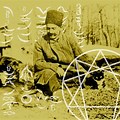What is Saint Lucy’s Day and why is it celebrated? Origins, customs and foods eaten










What is Saint Lucy’s Day and why is it celebrated? Origins, customs and foods eaten
Also known as the Feast of Saint Lucy and the festival of lights, Saint Lucy’s Day takes place on December 13.

Sweden, Norway and the Swedish-speaking areas of Finland celebrate the day in honour of the patron saint of the city of Syracuse (Sicily) and of virgins.
The annual celebration is known as a Christian feast day commemorating the martyr Lucia of Syracuse.
Saint Lucy‘s Day was once the date of the winter solstice, so she is the saint of light in the darkest days of midwinter.
Why is the day celebrated and who was Saint Lucy?
Who was Saint Lucy?
Saint Lucy was a young girl and one of the earliest Christian saints killed by the Romans in 304 CE due to her religious beliefs.
She achieved widespread popularity before the 5th century and was known to secretly bring food to the persecuted Christians in Rome, who were hiding in the catacombs under the city.
Saint Lucy would wear candles on her head to have her hands free to carry as much food as possible.
In Scandinavia, where she is called Santa/Sankta Lucia, Saint Lucy is represented as a lady in a white dress and a red sash symbolising the blood of her martyrdom.
She also has a crown or wreath of candles on her head, hence the name the festival of light.
What traditions are practised on Saint Lucy’s Day?
The day culminates in family traditions including having one of the daughters, usually the eldest, dress in all white.
The daughter then serves coffee and baked goods, including ginger biscuits and lussekatter (saffron bread), to other members of the family and visitors.
There is also a candlelit procession with girls and boys clad in white, full-length gowns playing various characters and singing songs together.
Leading the procession, Lucia is trailed by handmaidens (‘tärnor’), star boys (‘stjärngossar’), gingerbread men (‘pepparkaksgubbar’) and Christmas elves (‘tomtenissar‘).
Traditional foods eaten on Saint Lucy’s Day
Gingerbread biscuits are common on the day and are washed down with cups of glögg (mulled wine) served with almonds and raisins.
Coffee is also traditionally served, along with an S-shaped saffron bun known as Lussekatt.
Eating Lussekatt during any other time other than Saint Lucy’s Day or in the build-up to Christmas is seen as sacrilege by the Swedes.
Articles-Latest
- Koran burning conviction sparks fury as blasphemy law 'returns to UK'
- Robert Francis Prevost - Pope Leo XIV
- Pope Francis' death follows recent health challenges. Here's what we know about how he died.
- Easter April 2025 - international Celebrations
- The Rule of the twelve psalms -Worthy is the Lamb
- Religion in Africa Before Christianity and Islam
- 6 The Origin of Yahweh
- Dumo Di Milano
- What Did the Crow Tribe Believe In: Discover The Beliefs!
- 7 Reasons Historic Christianity Rejects the Book of Enoch
- 8 Breathtaking Mountain Monasteries Around the World
- Ethiopian Bible is oldest and most complete on earth
- Muhammad Muhammad was a prophet and founder of Islam.
- World Day of the Poor – SVP Christmas Campaign 2024
- Pope Francis to open 5 sacred portals on Christmas Eve — for a ritual that’s never been done before
- The 144,000 in Revelation
- Over 73 dead bodies 'used for meditation', 600 crocs in a pond, found in two Thai temples
- Occultism: Western Occult Tradition
- What is a Mudra
- Blood Sacrifices: Ancient Rituals of Life and Death
Articles-Most Read
- Home
- Let There Be Light
- Plants that feel and Speak
- The Singing Forest
- The Singing Forest-2
- Introduction
- Meditation
- Using Essential Oils for Spiritual Connection
- Heaven Scent
- Purification
- Plants that Feel and Speak-2
- Making the Spiritual Connection
- Anointing
- Essential Oils: The unseen Energies
- The Sanctity of Plants
- The Aroma Of Worship - Introduction
- The Aroma Of Worship-Foreward
- Methods Of Use
- Spiritual Blending
- Handling and Storage







